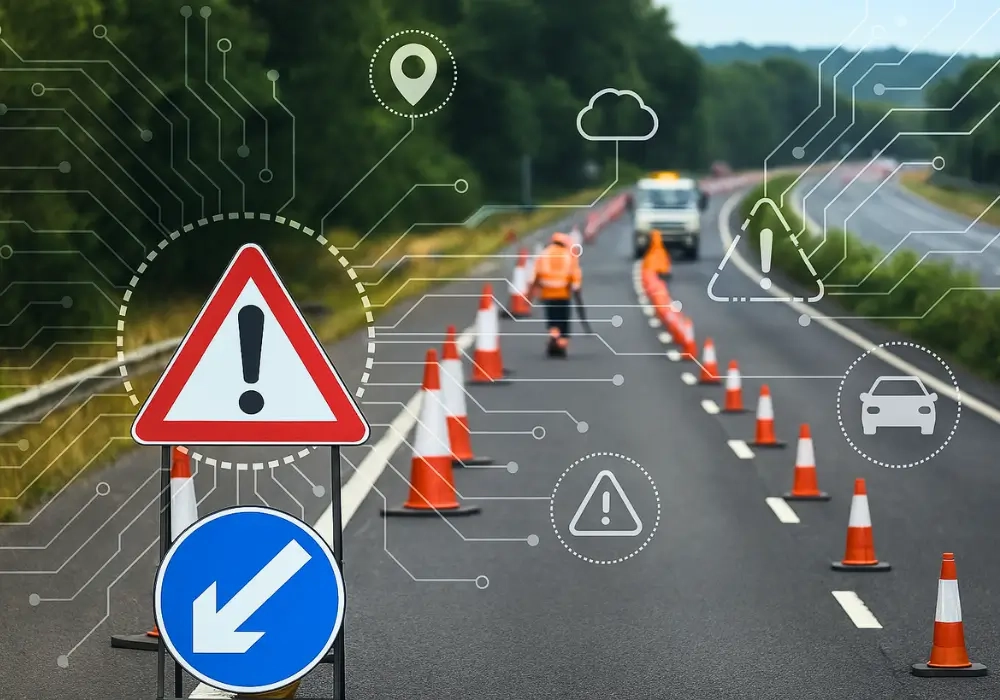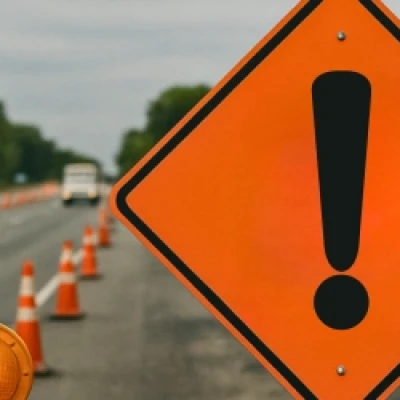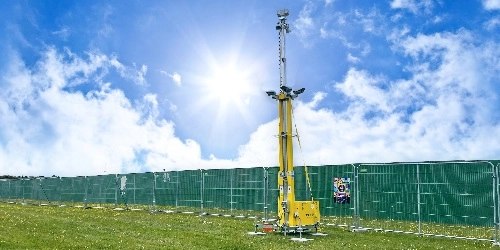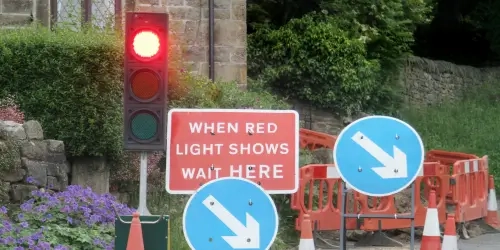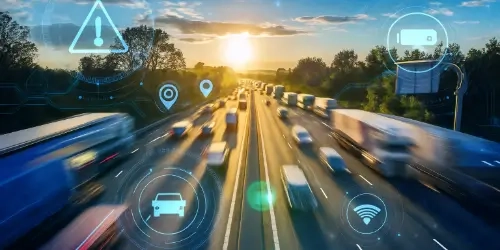Temporary Traffic Management (TTM) keeps the UK's road network safe during roadworks, maintenance and highway upgrades. But even the most carefully designed TTM operations face unique challenges that can cause delays and put workers at risk while driving up operating costs.
Poor visibility, unauthorised access to work zones and regulatory compliance pressures are just some of the issues traffic management contractors, transport planners and local councils navigate daily. With over 2,000 roadworks taking place across the UK each week, these can add up fast.
The good news? Modern technology offers practical solutions that directly address Temporary Traffic Management operational challenges, and we'll explore 8 of them in this article.
8 Temporary Traffic Management Operational Challenges in the UK (And How Tech Solves Them)
Let's look at 8 common TTM operational challenges in the UK and explain how modern technology solves them.
1. Poor visibility in adverse weather
Heavy fog, rain, snow and darkness create dangerous blind spots on stretches of roadworks. Traditional surveillance measures often fail when visibility drops, leaving sites vulnerable and workers at risk. In remote locations, wildlife encroachment adds another layer of complexity, particularly during dawn and dusk hours when animals are most active.
Poor visibility also makes it nearly impossible for traditional security guards or basic camera systems to monitor traffic flow, detect stopped vehicles or pinpoint potential threats at major events in real-time.
Solution: Advanced camera technology with night vision
Our Traffic Management Towers are equipped with HD PTZ (Pan-Tilt-Zoom) cameras with in-built infrared (IR) night vision and thermal imaging. These systems have a near-360° field of view and can detect activity and monitor traffic up to 200 metres away in complete darkness, dust and fog.
AI-video analytics verify genuine obstacles and risks, filtering out false alarms caused by weather conditions or wildlife. This means your TTM operations maintain full visibility regardless of what nature throws at them, keeping workers and road users safe and traffic flowing smoothly.
Read more: AI-Powered Detection on High-Speed Roads
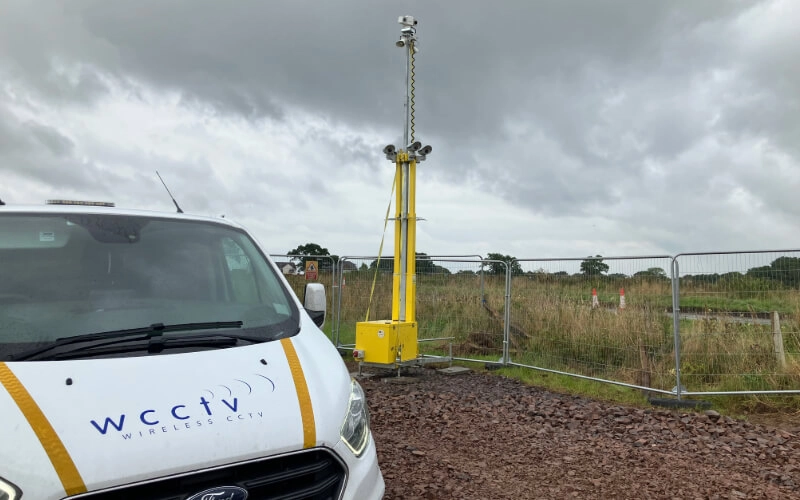
2. Safety risks from theft, vandalism and unauthorised access
Road workers face serious risks while working on or near moving traffic. Equipment theft, vandalism of traffic control devices and unauthorised site access create unsafe working conditions for both workers and road users. This can halt operations for days or even weeks, causing costly project delays.
Anti-social behaviour (ASB) from frustrated drivers, trespassers entering restricted areas and opportunistic intruders targeting valuable assets all threaten TTM operations. Without careful planning and proper surveillance, these incidents can escalate quickly.
Solution: Visible deterrents with 24/7 remote monitoring
Standing up to 6 metres tall and painted bright yellow, our temporary CCTV solutions for short-term road projects are highly visible psychological deterrents. Their presence alone discourages thieves, vandals and anti-social behaviour. In fact, studies show that overall crime rates in areas with CCTV surveillance dropped by 16% compared to those without.
Visibility is one thing, but remote monitoring takes it a step further. All of our CCTV Towers include 24/7 remote monitoring by NSI Gold Accredited centres, where trained security professionals review feeds in real-time. When suspicious activity is detected, operators issue various responses like live voice-down audio challenges, siren activation, dispatch of mobile keyholding teams and/or contact emergency services.
Read more:
-
How Mobile CCTV Towers Reinvent Traffic Safety During Short-Term Projects
3. Traffic congestion and project delays
Lane closures, diversions and temporary work zones naturally disrupt normal traffic flow. Without real-time monitoring, incidents such as stopped vehicles in live lanes, unauthorised access to restricted areas and confusion at diversion points can quickly cause serious congestion/accidents, affecting the wider road network and delaying your roadworks scheme.
Solution: Smart detection systems with real-time traffic analysis
Equipped with intelligent software, smart traffic management systems analyse traffic patterns and manage traffic flow automatically. They also identify stopped vehicles, wrong-way drivers and dangerous obstructions in real-time to improve safety and efficiency on the road.
Smart detection systems support workers' safety and incident responses, as well as capture video evidence of highways, lane closures, diversion routes and roadside work zones across the UK.
Smart bolt-on integrations, like ANPR technology and Body Cameras, further enhance control and vigilance by tracking vehicle movements in and around road construction sites and capturing worker-driver interactions, flagging issues instantly. Combined with professional remote monitoring, this allows for quick response to incidents before they escalate into major problems.
4. Navigating regulatory compliance
In the UK, TTM operations must comply with multiple regulations, including but not limited to:
-
Department for Transport's Traffic Signs Manual (TSM)
-
National Highway standards
-
Highways England's [GG 117] standards
-
CIOB requirements
-
Construction (Design and Management) CDM Regulations 2015
-
Health and Safety at Work Act 1974 and PPE compliance
-
GDPR data laws
-
Environmental protection standards (ESG)
Keeping track of all of these requirements while managing day-to-day operations creates significant administrative burdens for traffic management contractors and local authorities. And non-compliance isn't just a paperwork issue, as it can result in substantial fines, project shutdowns and reputational damage for violations and breaches.
Solution: Intelligent compliance management technology
Our Stellifii platform takes the complexity out of short-term road projects. It tracks PPE usage, monitors environmental conditions, manages GDPR-compliant video storage and generates automated time-stamped reports that demonstrate due diligence across multiple compliance fields from a single interface.
This cloud-based platform, with AES256 encryption and fully NDAA-compliant components, supports CIOB requirements, GG 117 standards and National Highways regulations in the traffic management sector.
Read more: Building an Effective Traffic Management Plan: Templates, Strategies & Tools
5. Increased carbon emissions
Traditional TTM security operations often rely heavily on diesel generators and fuel-hungry patrol vehicles. Together, they produce large amounts of carbon emissions and pollutants. With the UK working towards Net Zero by 2050, construction operators and local councils are facing increasing pressure to reduce their environmental impact and adopt greener ways of working.
Solution: Autonomous systems with environment monitoring
Our Traffic Management Towers are autonomous, operating independently of mains power or fixed internet. They run on a blend of fuel cell batteries and solar power, providing up to 20 weeks of uninterrupted surveillance. This drastically reduces Scope 1 emissions from your operations compared to fuel-run alternatives.
On top of this, our Towers integrate with IoT-based environmental monitoring sensors that track noise, weather, CO₂, vibrations and air quality in real-time. This data supports Section 61 construction industry compliance for sites near urban areas, providing transparent evidence for ESG reporting.
Read more: Sustainable TTM: Eco‑Friendly Approaches with Solar and Fuel‑Cell Towers
6. Driver confusion caused by miscommunication
Unclear signage, inadequate planning, insufficient warning distances and miscommunication between contractors often lead to driver confusion at TTM sites.
This is because the risk of collisions is higher when drivers don't have enough time to reduce speeds, change lanes or follow diversion routes. These communication issues can create risky situations for road users and construction workers.
Solution: Visible infrastructure and Intelligent Transport Systems (ITSs)
Advanced signage is the way to go to mitigate these risks. ITSs use tools like radar technology and mobile Variable Message Signs (VMSs) to provide drivers with real-time traffic updates. With Vehicle-to-Everything (V2X) technology, these systems can even communicate with connected cars, providing proactive warnings about hazards, potential collisions and changing road conditions.
Read more: The Digital Future of TTM: From Signage to Smart Monitoring
7. Delayed incident response
Every second counts when incidents occur on high-speed roads. Traditional monitoring that relies on foot patrols or record-only CCTV can't respond quickly enough to prevent minor issues from becoming major incidents. The time lost between when an incident occurs and when it's first noticed can create gaps that put workers and other road users at risk.
In addition, delayed responses also increase traffic disruption and the likelihood of secondary incidents caused by congestion build-up and driver confusion.
Solution: Smart monitoring with rapid response capabilities
Our fully-managed Traffic Towers include 24/7 remote monitoring from UK-based NSI Gold Accredited monitoring facilities. Trained personnel review live streams in real-time to distinguish genuine threats from false alarms and initiate rapid response where needed.
This gives site operators and transport planners a competitive advantage, ensuring incidents are flagged and responded to as soon as they occur. Stellifii provides comprehensive incident documentation with time-stamped records, video evidence and automated reporting that supports insurance claims and legal proceedings while enabling continuous improvement of TTM road safety protocols.
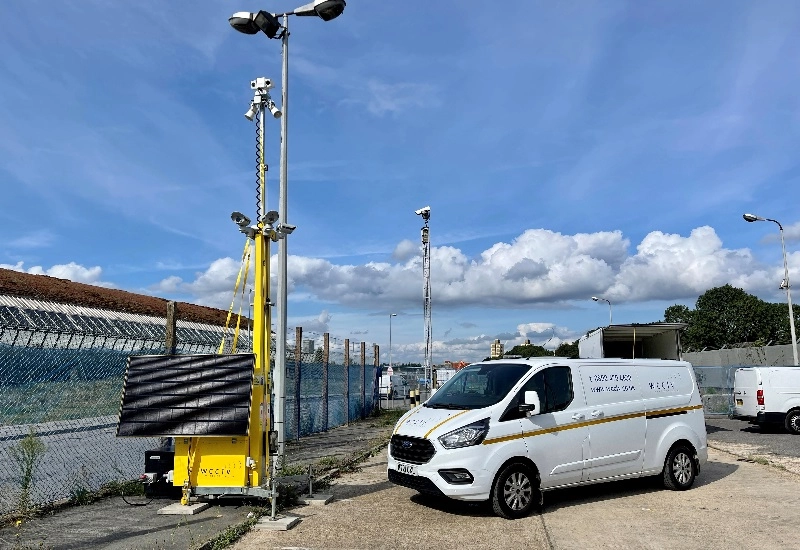
8. High operating costs
There's no denying that TTM operations are expensive.
Traditional TTM plans are labour-intensive and resource-heavy, requiring constant coordination, scheduling and supervision. And running costs stack up fast: generator fuel, staff wages, equipment maintenance and insurance premiums. For councils and contractors managing multiple roadside projects, these expenses can significantly impact project [margins] and profitability.
Solution: Cost-effective monitoring and surveillance
Our fully-managed CCTV solutions with remote monitoring cost up to 88% less than traditional surveillance methods. By eliminating exorbitant wage and fuel bills, you get professional-grade monitoring at a fraction of the cost.
On top of that, our in-built diagnostic software flags system issues instantly, with 90% of problems being resolved remotely. This cuts back on maintenance visits, further reducing your operating costs and improving your ROI.
Read more: Calculating the ROI of Mobile Roadside Surveillance
Overcome TTM Operational Challenges the Smart Way
Temporary Traffic Management doesn't have to be an operational nightmare. By combining proven TTM strategies with advanced technology, you can easily minimise disruptions, improve safety, ensure compliance and reduce costs.
With 6 regional hubs and over 20-years of experience in wireless traffic management surveillance, we understand your TTM challenges inside out. Our Traffic Management Towers, powered by in-built Stellifii software, deliver professional-grade traffic monitoring that's way more affordable than using traditional methods, making traffic control smarter and safer.
Take the smarter approach to Temporary Traffic Management in the UK and contact our surveillance experts today.
FAQs
What is temporary traffic management?
Temporary Traffic Management (TTM) keeps workers and road users safe while minimising disruption and ensuring smooth, safe traffic flow. TTM is the process of planning, designing and applying traffic control measures around roadworks, construction sites, maintenance upgrades and/or events.
Why is traffic management a challenge?
Traffic management is challenging because it must balance safety and efficiency while managing unpredictable driver behaviour, changing road conditions, tight project timelines and regulatory compliance demands.
Why is managing traffic congestion difficult?
Managing traffic congestion is tough because it involves unpredictable traffic patterns, limited road capacity and the need to keep vehicles moving safely and efficiently with minimal delays.
